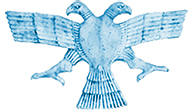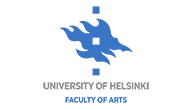Proto-Indo-European Lexicon
The generative etymological dictionary of Indo-European languages
The Proto-Indo-European Phoneme Inventory
© 2014-2025 University of Helsinki
"Durch zweier Zeugen Mund wird alle Wahrheit kund" — August Fick(PRINCIPLE of POSTULATION)
"@PIELexicon this is spectacular" – Eden Golshani @edeng
Welcome to PIE Lexicon Pilot 1.1: The generative etymological dictionary of Anatolian languages
Proto-Indo-European Lexicon is the generative etymological dictionary of Indo-European languages.
The current version, PIE Lexicon Pilot 1.1, presents digitally generated data of hundred most ancient Indo-European languages with three hundred new etymologies for Old Anatolian languages, Hitttite, Palaic, Cuneiform Luwian and Hieroglyphic Luwian, arranged under two hundred Indo-European roots.
The correspondences contain data of all fourteen sub-branches of the Indo-European languages, Albanian, Anatolian, Armenian, Baltic, Celtic, Germanic, Greek, Indo-Aryan, Iranian, Italic, Old Balkan (Satem), Old Balkan (Centum), Slavic and Tocharian.
The Anatolian etymologies have been chosen due to their particularly problematic nature, and in the absence of other criteria the selection is random. However, as all the oldest forms of the languages are represented in the data, the ancient languages still absent in PIE Lexicon are supplemented in the near future.
We use a set of sound laws of the Neogrammarians, the laryngeal theory and monolaryngealism critically revised and selected to form a consistent system in Pyysalo (2013), which allows a computer-generated derivation of the most important (ancient) Indo-European languages.
The derivation has been digitized by means of Foma, a programming language developed by Mans Hulden (2009). In Foma the Indo-European sound laws are equipped with their digital counterparts, which are then arranged in chronological order. After this a PIE reconstruction results in a respective Indo-European form, when the Foma script of that language is applied.
All Indo-European forms of PIE Lexicon are automatically generated from the proto-language, and if marked with black the generation is successful. Any mismatch in the derivation are marked with red, and the derivation of a form through successive sound laws is generated by clicking its PIE reconstruction (in blue).
An example of a root (matrix) in PIE Lexicon for the meaning 'Homeland'
Click on the PIE *reconstruction to see how the respective IE form is generated with the Foma (sound law) script.
 The PIE Lexicon Project licenses its data, linguistic results and finite-state encoded rules under a Creative Commons Attribution-ShareAlike (CC BY-SA) license.
The PIE Lexicon Project licenses its data, linguistic results and finite-state encoded rules under a Creative Commons Attribution-ShareAlike (CC BY-SA) license.

